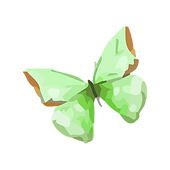The Elusive Guardians
- Eve

- Jun 28, 2017
- 9 min read
The Niō Guardians are a pair of Dharma-protecting deities that have remained almost unchanged from the time they emerged in India to their present prominence in Japan, a consistency that is unusual for Buddhist figures as well as mysterious considering how often they appear in different Buddhist regions, which is suggestive of their interconnectedness with the movement of the Buddha through history. They are a pair of gatekeepers that are often large in stature yet de-emphasized in historical or religious literature. Representations of the Guardians can be found in much of Buddhist art, most notably in Japan where they even have individual names and nicknames. Despite this, their history must be pieced together from the fragments that one can find scattered in books, captions, and websites on Buddhism. (For example, the Niō Guardians are only mentioned once in the text of The Great Eastern Temple: Treasures of Japanese Buddhist Art from Tōdaiji by Yutaka Mino on page 110.) The Niō Guardians are a very revealing part of Buddhist symbolism, incorporating leftover characteristics from Hinduism as well as influences picked up from other cultures during the development of Buddhism. Their current appearance has been in the works as long as Buddhism itself has existed yet has never in that time drastically changed, even while Buddhism broke into countless schools wherever it took hold. The objective of this study is to compile their characteristics as well as explore the background of the Niō Guardians that seems to have been, even if by accident, largely ignored despite their frequent appearances. Even though I did not know what to look for when I visited Japanese Buddhist temples, I took a liking to the Guardians while I was there and noticed them in almost every temple I went to. Oftentimes they are very big in order to surprise temple-goers and tourists.
Deva king means “god king” because deva is Sanskrit for “deity.” Similar to nāgas in many ways, another Hindu creature, they live in a realm closer to enlightenment than mankind, perhaps in the Buddhist version of heaven featured in B. Khantipalo’s diagram showing the levels of existence leading to Nirvana, yet sometimes appear on earth to guide and protect mortals. Hindu gods often do this, taking on new forms in order to speak with men. Even though they are divine creatures that are more spiritually awakened than humans, devas’ virtue is not actually equal to that of Buddha(s). The aforementioned diagram is in the shape of a pyramid divided into different realms, with the base being hell—below even animals’ existence—and the peak, or above the peak, being Nirvana or true Buddhahood. Heaven is in between man’s realm—right in the middle—and below Nirvana, so deities such as devas, gods, et cetera are more aware of the nature of all things yet are not enlightened. Thus they still revere Buddha and, in the case of deities like the Niō Guardians, guard him. Like disciples, they stand below him in reverence. In his book Buddhism: Introducing the Buddhist Experience, Donald W. Mitchell explains that devas (which he translates as “gods”) have existed in India since about 2000 BCE, going all the way back to Vedic tradition, and were carried into China with Buddhism on the backs of Silk Road traders. Devas are ¨non-human beings¨ with abilities beyond those of mortal men, such as longevity and great strength. Although these deities are perceived as beings of positive influence, they are portrayed with ugly features like fangs, brightly colored skin, horrible grimaces, and menacing postures. Examples of devas are the Four Celestial Guardians, the manifestations of the four directions, as well as to the thunder and wind deities (Raijin and Fūjin), all of which look very similar and are popular within Japanese religions. While definitions for deva vary, the Guardians and their fellows seem to be at least demi-gods, if not full deities; disagreements on definitions probably became convoluted after they were translated by so many people. Additionally, the Niō Guardians are sometimes illustrated with Hinduistic fiery haloes that suggest full divinity, though maybe at a lower level than say Shiva or Vishnu. They may have even evolved from yaksas, which are Indian “apotropaic” gatekeeping spirits. Their role in any sect, however, never changes; the Guardians are always placed on either side of the Buddha, forever subservient to the pure nature of the Dharma. Their divinity will always be less important than their mission within Buddhism.
Another speculation about the Guardians’ origin is that they may be incarnations of the Buddha Vajrapani. This version would explain the reference to the vajra (¨thunderbolt¨), which the Guardians are occasionally seen holding, sometimes elongated into a spear. The vajra is not really a weapon; rather, it is a tool used in Vajrayana rituals, as well as other sects of Buddhism, and is usually accompanied by a bell. It represents fundamental wisdom teachings and is often drawn alongside lotus flowers. Referring to the earlier topic of devas, it is not unusual for deities to hold symbolic items like the vajra. This is a symbol that, like the Guardians, dates back to India and eventually became a part of Buddhism. Since the countless schools of Buddhism have similar roots that are often debatable due to differences between inconsistent records and legends, the uncertainty of the Guardians’ beginnings should merely enrich one’s understanding of them rather than hinder it. One could say that their tangled past makes them more Buddhist, having evolved and survived many twists and turns since their birth in western Asia, emerging as they have in Japan only after many centuries.
The Niō Guardians have the appearance of giant, muscular wrestlers with hostile faces and postures meant to ward off unwanted visitors to places of the Buddha. Together they guard monks, children, and visitors from evil spirits and welcome good people onto temple grounds. They stand upright on either side of temple entrances, usually doors or main gates, in threatening poses that are emphasized by their fierce, glaring faces. Their clothing varies based on the surrounding culture but they tend to be dressed in the same sort of attire: loose fitting pants, celestial scarves wrapped around their shoulders, and hair bound in topknots. Their chests, arms, and feet are almost always bare, unless a statue happens to be wearing armor. As stated earlier, they are often carrying vajra as if they are weapons. Each Guardian usually keeps one hand spread open and the other hand clenched, often around a vajra weapon, although depictions of the pair holding the vajra are less common farther east of India and China. The same is true for other devas that made their way into Buddhism, namely the guardians of the directions. Aside from these identical physical characteristics, the Guardians actually have distinct expressions and personalities.
Misshaku-Kongō is the more threatening of the two, leaning farther forward with his chest thrust out. He holds some kind of weapon, or vajra spear, more frequently than his fellow kongōrikishi does and makes an angrier expression. His mouth is open in a snarl and he bares his teeth at observers, scaring demons away with his ferocity. His nickname is Agyō, due to the ah sound he makes with his mouth. Naraen-Kongō, on the other hand, stands with a slightly less menacing posture. He too looks tense, a warning to evil-doers, but he keeps his arms closer to his body, his shoulders farther back, and has a less fierce look on his face. In fact, the opposite of Misshaku-Kongō, he holds his lips tightly shut to keep out demons and to keep in good spirits. Ungyō is his nickname because of the un sound he makes with his mouth. The faces the Guardians make are also the names of expressive masks from a form of Japanese Buddhist theater called gigaku. There are many masks, but the Guardians’ Japanese name kongōrikishi is a combination of kongō and rikishi (see Figure A). Though both of these masks display rage, the main difference is the bared teeth of the kongō mask – Misshaku-Kongō’s favored expression.

A map of Tōdaiji found on Google Images. The large building to the left with the big courtyard is the temple housing the Daibutsu. The smaller building in the right bottom corner is the Great South Gate, where the Niō Guardians are.
There are many famous kongōrikishi sculptures throughout Buddhism, the best known of which are in Japan. The most famous is Tōdaiji (¨Great Eastern Temple,¨ see Figure B) in Nara where one of the world's largest iron cast Buddha statues is housed in the world's largest wooden structure (Daibutsu-den, “Great Buddha Hall”). This statue, the Daibutsu, sits on an enormous lotus blossom flanked by golden statues of Bodhisattva Kannon with a second set of guardians (not niō) standing behind him. Away from the temple is the Great South Gate, the main entrance to the grounds, where the Niō Guardians are housed, facing each other, and glare down at passerby. Everyone walking to see the Daibutsu must pass between them through the niōmon (仁王門, Japanese term for a gate with the Guardians on either side of it). Each statue is many times a man's height and the Guardians tower over visitors. There is no documentation on the artist, but the famous sculptor Unkei, and perhaps Kaikei, is often credited with their construction. Tōdaiji has other portrayals of the Niō Guardians as well, but they are kept in buildings less frequented by tourists. Another famous site for viewing the kongōrikishi is the Sanjūsangen-dō (¨Hall of Thirty-Three Bays¨) in Kyoto. (I was able to visit this temple while I was in Japan and bought a pamphlet containing pictures and descriptions of all these beautiful statues because they were too delicate to be photographed.) This temple houses a thousand images of Bodhisattva Kannon, a central Kannon statue, and a series of life-sized lacquered wood sculptures of the twenty-eight guardian deities of Kannon. The gods Raijin and Fūjin, mentioned earlier, are also in the collection. The statues of Misshaku-Kongō and Naraen-Kongō are perfect representations of kongōrikishi symbolism and typical attire. Yet another famous Niō Guardian pair is located in Kamakura, which is home to another temple of Kannon. These sculptures are very similar to those at Sanjūsangen-dō, but have very bright red skin that is rarely seen outside of Indian or Chinese paintings.
The Niō Guardians are, essentially, gatekeepers for temples and protectors of the Buddha's Dharma. The kongōrikishi are ultimately good despite their horrifying faces and their name has occasionally been translated as “the kings of compassion” to reflect this. Though their origins lie in Hinduism and their level of divinity is sometimes unclear, they are an now an integral to the Buddhist cosmos. The Niō Guardians are beautiful wherever they appear and are a part of Buddhist symbolism that deserves to be focused on more than they are. When they are seen, the information tends to be brief and touristy in comparison to the amount of literature available on similar Deva king figures. They are deemphasized and understated, yet somehow the Niō Guardians have survived as long as Buddhism has. They seem to appeal to Buddhists all over China and Japan, crossing into different schools, so you can find them in almost any Buddhist temple you enter or spot them in almost any book of Buddhist artwork. That such a well-liked, reoccurring pair of figures is so difficult to research is tragic. An underappreciated piece of Buddhist symbolism, hopefully the Great Sage Holders will come into the spotlight of peer review one day. Until then, and forever after, they will continue to stand guard at the gates of enlightenment all over Eastern Asia.
Bibliography
Banham, Martin. The Cambridge Guide to Theatre. New York: Cambridge University Press, 1988.
Bentley, Jerry H. Old World Encounters: Cross-Cultural Contacts and Exchanges in Pre-Modern Times. New York: Oxford University Press, 1993.
Buddhist Studies. ¨Symbols / Iconography.¨ Last modified 2014. ¨The Vajra (Thunderbolt).¨ BDEA / BuddhaNet. Accessed April 22, 2014. http://www.buddhanet.net/e-learning/history/bud_vajra.htm.
Cleary, Thomas. The Buddha Scroll. Boston: Shambhala Publications, 2002.
Coomaraswamy, Ananda K. Elements of Buddhist Iconography. New Delhi: Munshiram Manoharlal Publishers, 1979.
Digital Dictionary of Buddhism. ¨Kongorekishi (金剛力士).¨ Last modified May 6, 2008. Charles Muller. Accessed April 22, 2014. http://www.buddhism-dict.net/cgi-bin/xpr-ddb.pl?q=%E9%87%91%E5%89%9B%E5%8A%9B%E5%A3%AB
Frédéric, Louis. Buddhism: Flammarion Iconographic Guides. Paris: Flammarion, 1995.
Gakugeki Kamen. “What is Shin-Gigaku?” Gakugeki: Oriental Dramatrugy. “Shin-Gigaku,” Gakugeki Kamen, accessed May 28, 2014, http://park.org/Japan/DNP/MTN/MN_E/shin-gigaku/gigakumen.html.
Japanese Buddhist Sanctuary. ¨Niō Guardians (Benevolent Kings) Protect Entrance Gate at Temple.¨ Last modified 2014. Mark Schumacher. Accessed April 22, 2014. http://www.onmarkproductions.com/html/Niō.shtml.
Kobayashi, Takeshi. Nara Buddhist Art: Tōdai-ji. Tokyo: Weatherhill/Heibonsha, 1975.
Mino, Yutaka. The Great Eastern Temple: Treasures of Japanese Buddhist Art from Tōdai-ji. Bloomington: The Art Institute of Chicago, 1986.
Mitchell, Donald W. Buddhism: Introducing the Buddhist Experience. New York: Oxford University Press, 2008.
National Treasure: Sanjusangen-do. Pamphlet. Kyoto: Sanjusangen-do, 2013.
Ray, Reginald A. Secret of the Vajra World: The Tantric Buddhism of Tibet. Boston: Shambhala Publications, Inc., 2001.
Rosen, Steven J. Essential Buddhism. Westport: Praeger Publishers, 2006.
Seckel, Dietrich. Buddhist Art of East Asia. Translated by Ulrich Mammitzsch. Washington: Western Washington University: 1989.
Sugiyama, Jirō. Classic Buddhist Sculpture: The Tempyō Period. Translated and adapted by Samuel Crowell Morse. New York: Harper & Row Publishers, Inc., 1982.
Wikipedia. ¨Buddhism.¨ Last modified March 28, 2014. Wikipedia: The Free Encyclopedia. ¨Niō.¨ Accessed April 22, 2014. http://en.wikipedia.org/wiki/Niō.
ALL PICTURES FOUND ON GOOGLE IMAGES





























Comments